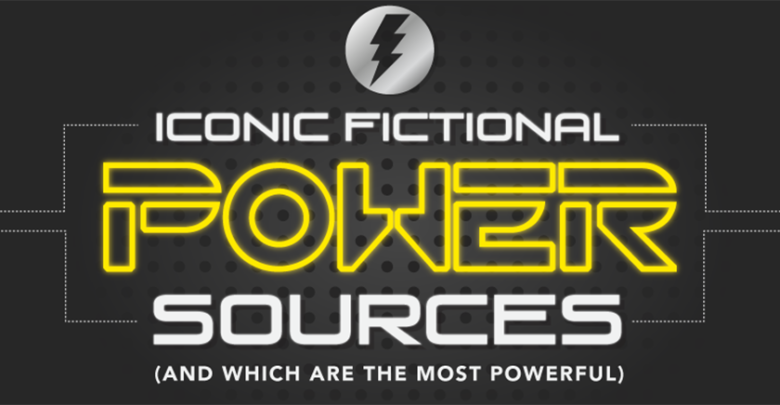
If you want to make movie magic, you’re going to need impressive amounts of energy to power the awesome devices featured in films – at least in theory. For generations, screenwriters have devised all sorts of futuristic solutions, and some of them have become icons of the sci-fi world. While many of these writers have taken considerable liberties in describing their creations, there is often a bit of actual science behind their inner workings. From arc reactors to flux capacitors, here’s a closer look at the energy behind fictional power sources.
Consider the Human Torch, lightsaber, Thor’s hammer, and flux capacitor for a moment. They have the ability to melt steel, dissect powerful adversaries, control the elements, and enable time travel, respectively. Yet despite being central to some of the most notable superhero films of all time, their combined power represents less than the equivalent of a single ton of TNT – a particularly small amount of energy given their vigorous applications.
![]()
Yet these examples prove that it’s not all about size. When their energy is concentrated into a very small package, the results are nothing short of explosive. While we may not have mastered the technology that makes these devices a reality, we have harnessed similar levels of energy through the use of methods like hydroelectric dams and nuclear fusion.
First on our energy scale: Two power sources that utilize nuclear fusion for long-term power output. In “Iron Man,” Tony Stark calculates the output of the arc reactor as equaling 3 gigawatts, an amount of energy capable of sustaining his heart for 50 lifetimes or “something big for 15 minutes.” Likewise, the Terminator’s iridium nuclear-energy cell is said to be able to run the T-800 cybernetic organism at full power for about three years! These devices are both quite impressive, with the arc reactor representing more energy output than the Hoover Dam and the nuclear-energy cell representing the “drive” contained within 18,300 tanks of gas.
![]()
Both energy sources have foundations in actual science. For example, our sun is an ancient source of nuclear fusion energy; it produces more than enough energy to sustain life on our entire planet! Nuclear batteries are a real thing too. NASA uses them to power equipment during long-distance space exploration – where a constant supply of energy may be required for years at a time. And although they’re currently frowned upon for safety reasons, nuclear batteries were once used to power pacemakers inside actual humans. There is a tremendous amount of research being done to harness the potential energy supplies made possible by nuclear fusion and to subsequently shrink the systems into progressively smaller sizes.
While these energy sources are all impressive, they’re nothing compared to what’s next. Starting with the human batteries used to power the self-aware machines in “The Matrix,” power levels reach the equivalent of tens of millions of tons of TNT and far, far beyond. The basis for this energy source relies on the fact that humans are constantly radiating energy in the form of heat. The average person emits 100 watts of energy while at rest and several times that at high levels of physical exertion.
![]()
The act of harnessing human energy is not limited to movie scripts, however, as some gyms have started implementing exercise machines that capture this excess energy, using it to supplement the power needs of the facility. But at the scale portrayed in the movie, one would need billions of humans – a fact that is visually represented in the film with endless fields of human subjects being stored simply for their energy.
While many of these power sources have foundations in reality, it wouldn’t be true science fiction if some examples didn’t stretch the numbers to truly astronomical proportions. A few notable examples include warp drive (Star Trek), the Death Star’s superlaser (Star Wars), and the tesseract (Marvel). Requiring at the very least an ability to convert mass into pure energy – and at the most a yet-to-be-discovered source of unlimited energy – these technologies push the boundaries of known science. We’re talking the equivalent of anything from one year’s worth of the Earth’s power consumption to over 80 centuries of the sun’s energy production and well beyond.
![]()
From the most modest of outputs to the completely unlimited, we have witnessed awe-inspiring creations straight from the minds of the most creative writers in recent history. Perhaps more exciting than the action on the big screen is the fact these technologies are progressively becoming a reality. The rapid pace at which the science and technology fields are advancing provides an exciting opportunity for future generations to take these innovations out of the movies and into reality.
![]()
Artikel ini diambil dari saveonenergy.com dengan judul “Iconic Fictional Power Sources”, https://www.saveonenergy.com/iconic-fictional-power-sources/
Penulis/Editor : Save on Energy
Foto Cover : Save on Energy



